HOW TO SEW LEATHER BY HAND?
VIDEO: SADDLE STITCH TECHNIQUE
1- Glue the leather pieces to be assembled with water-based leather glue - aquagum or neoprene depending on your creation (in a bead of about 4 mm). Put glue on each piece: contact glue. Do not glue directly, let dry for 5/10 minutes.

2- After assembling the pieces, trace the seam line with a groover, a former or a dry-point compass between 3 and 5 mm from the edge. The seam should not be too close to the edge of the leather.

3- Using a mallet and a striking claw, mark the stitching points. The goal is not to pierce the leather entirely, but only part of its thickness.
We have chosen to mark the points next to the drawn line in order to keep a decorative line (only possible on vegetable tanned leather) . For beginners, you can mark the points directly on the line.
We recommend using a plastic or polymer hammer to avoid damaging your tools.

4- Cut a linen thread: generally equivalent to 4 or 5 times the length of the sewing line. If you have to do a long seam, take an armful = length with outstretched arms so as not to have to handle meters of thread. An armful corresponds to the "maximum amplitude" of your movements (depending on your build).
Wax the thread with beeswax: pass it through 3 times and wipe it dry. It is important to wax the thread before sewing to bond the thread fibers together, protect it, and prevent it from knotting.
Thread a needle through each end of the thread:
- Insert the thread at needle height and then insert it twice.
- Crimp the end of the thread and pass it through the eye of the needle.
- Pull the thread to make the knot (see photo).
- Do the same thing to thread the other end of the thread onto the second needle.
Don't have enough thread to finish your seam? We invite you to watch our video (starting at minute 14) where we explain how to make a match. Purists will tell you that it's forbidden, but it can sometimes be useful!
 |
 |

5- Clamp the leather in the jaws of the saddler's pliers / sewing pliers and leave the stitching line about 4 mm above the jaws.

6- Pierce the leather with the awl with pliers (diamond awl): raise the elbow to the height of the seam line and form a right angle (90°) in relation to the piece. Be careful, respect the drilling angle with the diamond awl or you risk not having a nice seam.
 |
 |
7- Start sewing with a saddle stitch. Always sew towards yourself.
For aesthetic reasons, in our video we start our seam at the 4th stitch in order to make 3 double stitches and thus have symmetry in relation to our end seam (the 3 stopping stitches) => to be done only if the seams do not join.
You can also simply start your sewing from the first stitch by leveling the threads or making a saddle stitch (when you are at the edge of a piece - e.g. card holder) .
- Left hand: pass the needle using the iron of the awl (photo no. 1).
- Right hand: form a cross and pull on the needle (photo no. 2).
- Pull the threads towards you to avoid any kinks* and pass the needle (right hand) in front of the thread you have just passed (photo no. 3).
- Take the thread on the left side and pass it over the needle towards the outside: make a comma (photo n°4).
Our advice for beautiful sewing: practice ! The movements must become mechanical.
*Marriage: when one thread goes into the other thread (forms a kind of knot): a mixture of threads.
 |
 |
 |
 |
8- Pull on each needle to tighten the stitch : left hand upwards and right hand towards you - diagonally at about 45° to the leather. You must tighten the stitch well (use your thumbs) and have the same tightening force for each stitch.
 |
 |
9- Make 3 backstitching stitches with a round awl to enlarge the holes: do not make a comma / pass the thread over the needle. Cut the thread flush then put a dot of glue on each side.

10- Hammer the seam with a riveting hammer or a joining hammer: pay attention to the angle of strike and do not hit too hard to avoid damaging/marking the leather.

All you have to do is work the edges with a square cutter and then an edge finish or a finishing eraser (tokonole / tragacanth gum).
WHICH THREAD AND NEEDLE SHOULD I CHOOSE FOR SEWING LEATHER?

The most commonly used thread diameter for hand sewing leather is:
For leather goods (handbags, school bags, etc.).
- 632 – Fil Au Chinois
- M50 – Meisi
- Ø 0.55 mm
For small leather goods (card holders, purses, etc.).
- the 832 Fil Au Chinois
- M40 – Meisi
- Ø 0.45 mm
The Deco Cuir needle, with a round tip, reference (L3912) is size 002 - Ø1 mm. You can use this needle for all your "standard" leather goods creations. For small leather goods, choose size 004 - Ø0.8 mm.
To learn more about choosing the right needle and thread for sewing leather, we invite you to consult our guide:
ARE YOU LEFT-HANDED?
We invite you to purchase the Atelier Haptique book "Saddlery Techniques - Leatherwork" which details the specific steps of saddle stitch sewing when you are left-handed.
THE TOOLS NEEDED FOR SADDLE STITCH SEWING
SADDLER'S PLIERS
Sewing pliers are essential for hand sewing leather because they will serve as a third hand to hold the piece of leather. The pliers are positioned between the legs. We recommend protecting the beak of your pliers with self-adhesive leather to prevent the diamond awl from damaging it. We also recommend having a small 10 cm wedge under your foot to better hold the pliers.

AWLS
The round awl allows you to enlarge holes without breaking/damaging the thread to help the needles pass through, especially when starting and finishing sewing.
The pliers awl, also called a diamond awl, is used to pierce leather before saddle stitching (hand sewing of leather). It is one of the craftsman's most personal tools because the handle can be adapted to the hand.
Tip: Remember to sharpen your awl well to avoid forcing and damaging your leather.

HOW TO SHARPEN AN AWL WITH PLIERS?
To achieve quality work, you need quality tools. To do this, remember to sharpen and hone your tools regularly!
DRAW THE SEAM LINE
The former, the furrier and the drypoint compass are 3 tools that allow you to trace the seam line: choose the tool that suits you!
The compass is useful for going to the middle of a piece and the tree frog can also dig a furrow to drown the thread and protect the seam.

MARK THE STITCHES
The striking claw or the stitch marking wheel allows you to have stitches at regular intervals.

THE DIFFERENT TYPES OF SEWING CLIPS AND VALETS
Discover our comparison table of the different clamps and valets for hand sewing leather.
| Tool | Benefits | Disadvantages |
| Traditional saddle clamp (between the legs) |
- Industry standard, solid and durable |
- Frozen position, leg/back fatigue - Bulky - Depending on the model, may be less practical for very thick or very rigid assemblies |
| Sewing valet (vertical clamp, placed or overlapped) | - Higher position, relieves back pain - Suitable for larger rooms - Relatively light and transportable |
- Less common - Variable stability if poorly calibrated - Tightening sometimes limited |
| Valet to fix on workbench | - Excellent stability - Adjustable height (ergonomic) - Very comfortable for long sessions |
- Requires a sturdy workbench - Little mobile, fixed |
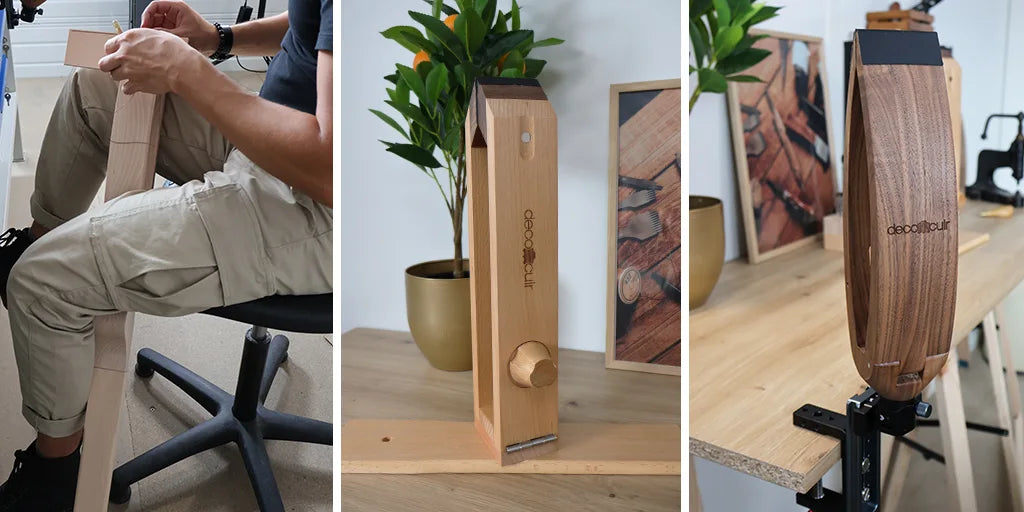
Below is a quick summary of our favorite tools:
We have drawn on our experience to offer you a starter kit with the essential tools for hand sewing leather (3 ranges: Essential, Essential + and Premium).
HOW TO SEW IN A ROUNDED EDGE?
The technique is the same for rounded stitching! We recommend marking your stitches with a marking wheel, which is the easiest tool to use (or a 2-pronged claw). The angle of the piercing with your awl and pliers should follow the angle of the stitches.

HOW TO SEW AT AN ANGLE AND WHAT IS DOUBLE STITCHING?
Learn corner stitching by making a Choupette©. In this guide, we'll cover various technical points, including double-stitching and missing stitches!
WHICH LEATHER SHOULD I CHOOSE FOR SADDLE STITCHING?
Ideally, you should choose a thick leather (at least 1.2 mm thick) that's not too soft. We invite you to read our guide on the different leather finishes.
WHICH LEATHER SHOULD I CHOOSE FOR MY CREATION?
HOW TO USE A STRIKING CLAW?
The punching claw will allow you to have a regular seam. Several factors must be taken into account to have a beautiful seam:
- Always keep the claw perpendicular to the leather and stable;
- Always go back 3 points;
- Always scratch with the net to your right;
- Always start by working the corners with a 2-pronged claw: the rule is that the point located in the corner must always point towards the center of the room. It is also possible to mark the corner with a round awl.
- Never use a mallet with a 2-pronged claw as this may pierce the leather and damage it.
There is no direction to hold the claw: the point is the same on both sides.
We recommend using a plastic or polymer hammer to avoid damaging your tools.
 
 |
|
The different types of striking claws:
You can discover 2 types of brands in our store:
1- The pricking point marking claws (straight line also called "comb") allow you to mark the leather with the right inclination to facilitate the "insertion" of the awl.
2- The diamond-tipped striking claws (diamond) allow you to pierce the leather like an awl with pliers. Be careful to keep it perpendicular otherwise your seam will be skewed on the reverse side. If your leather is thick, we do not recommend piercing it completely but only on a large part of its thickness (pre-piercing): otherwise your stitch will not be pretty (risk of having a larger stitch on one side of the leather) .
For aesthetic reasons, we prefer the pricking point.

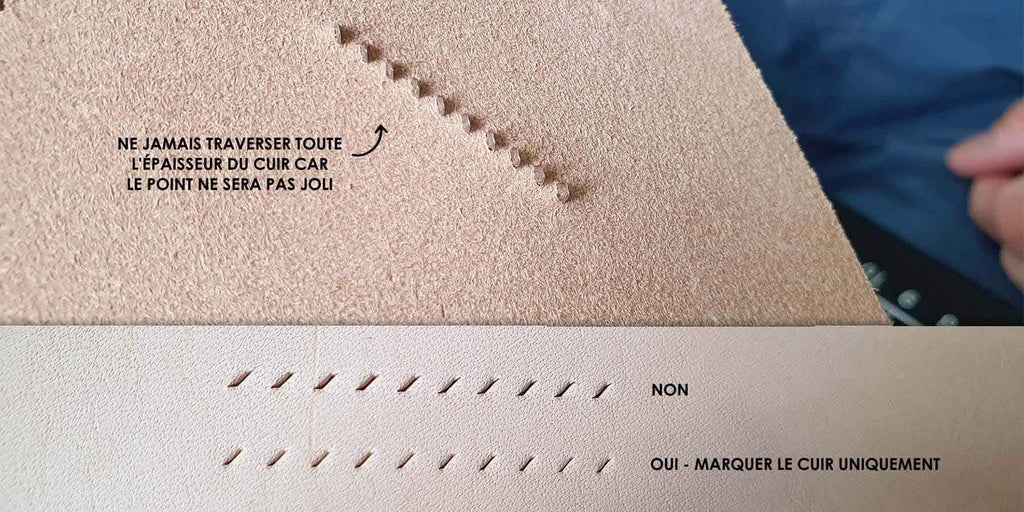
What is the difference between a standard stitch and a reverse stitch?
The "reverse" claw stitch is symmetrical to the "standard" stitch. This stitch is generally used for double-claw sewing or to make a connection on a creation that has been sewn with a professional sewing machine.
Claws with a "reverse" point are generally called "left-handed claws": this is a misnomer; there are no left-handed or right-handed claws. As a reminder: there is no direction for holding the claw; the point is the same on both sides.

Which center distance (striking claw) should I choose?
The center distance is the distance between two points: it should be chosen according to the item you wish to create: aesthetic choice. The "standard" for leather goods creations is the center distance 3.38 mm - n°8 (3 points per centimeter) . To know which center distance to choose for your creation, we invite you to consult our guide:
How to adjust the spacing/center distance of the last stitches?
When you only have a few points left to mark with your punching claw, there may be a slight offset. You must therefore adjust the spacing of the last points by eye or using our plexiglass template to avoid these offsets (points too large or too small).
WITH A TEMPLATE
SEE THE TEMPLATE ARTICLE SHEET >
TO THE NAKED EYE
WHAT ARE THE DIFFERENCES BETWEEN HAND SEWING LEATHER AND MACHINE SEWING?
Unlike machine stitching, the saddle stitch technique allows each of the two threads to pass over and under the layers of leather. This makes the seam more solid: if one of the threads breaks, the seam will not come undone and can be repaired.
 Sewing leather with a saddle stitch allows you to obtain a beautiful slanted stitch on both sides (right and wrong sides).
Sewing leather with a saddle stitch allows you to obtain a beautiful slanted stitch on both sides (right and wrong sides).

WHAT IS SIMPLIFIED LEATHER STITCHING?
Simplified sewing involves piercing the stitches using a round punch. This straight stitch technique is primarily aimed at beginners.
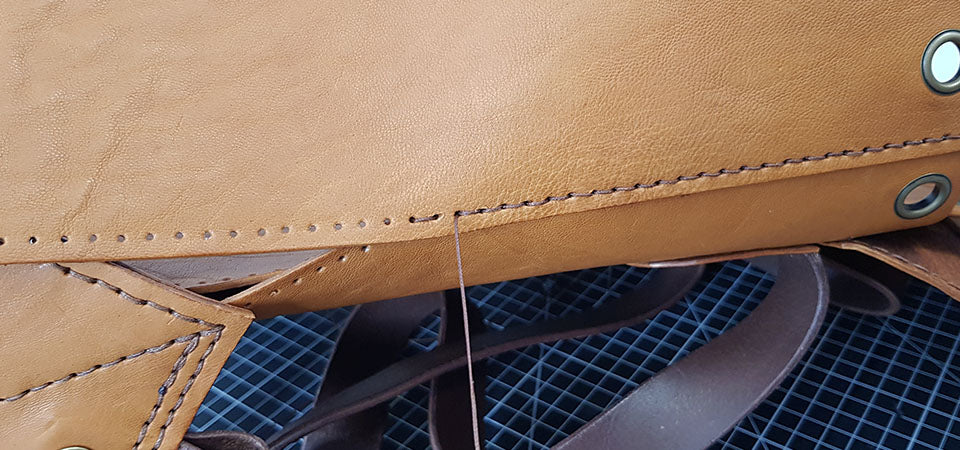
WHERE TO TRAIN IN SADDLESTITCH SEWING?
Come and learn saddle stitch sewing during a training day at our premises located in Campbon between Nantes and Saint-Nazaire (44 - Loire Atlantique).


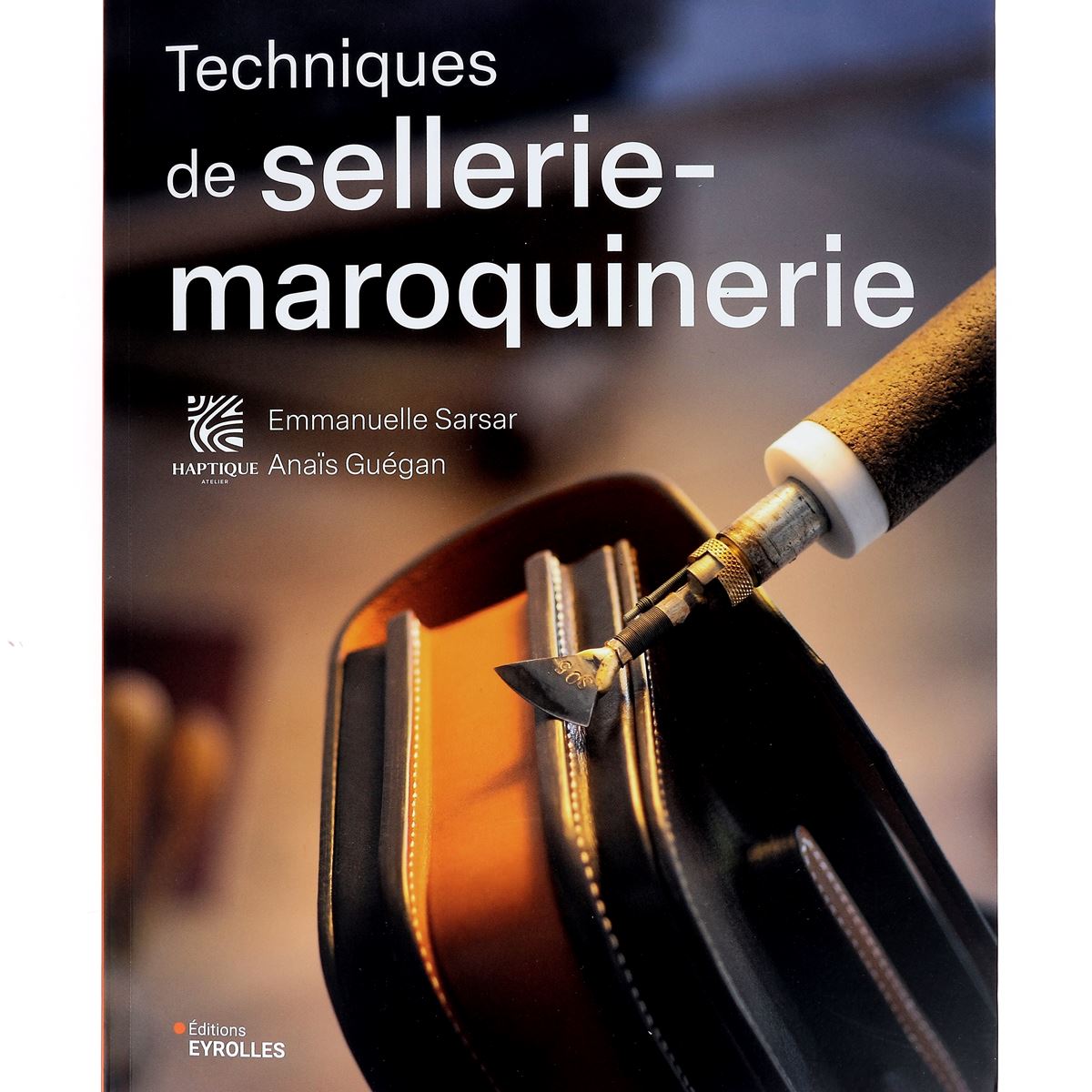

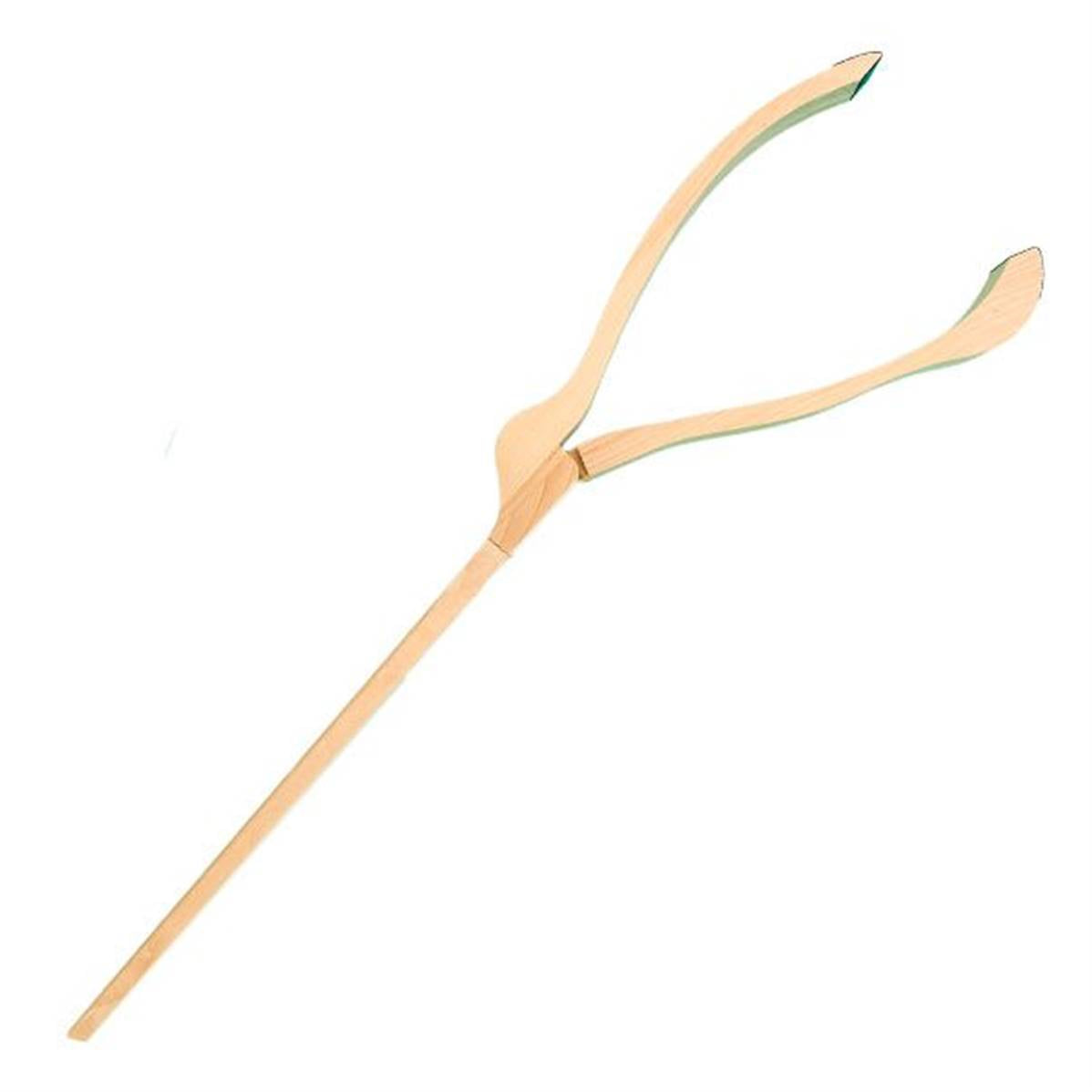

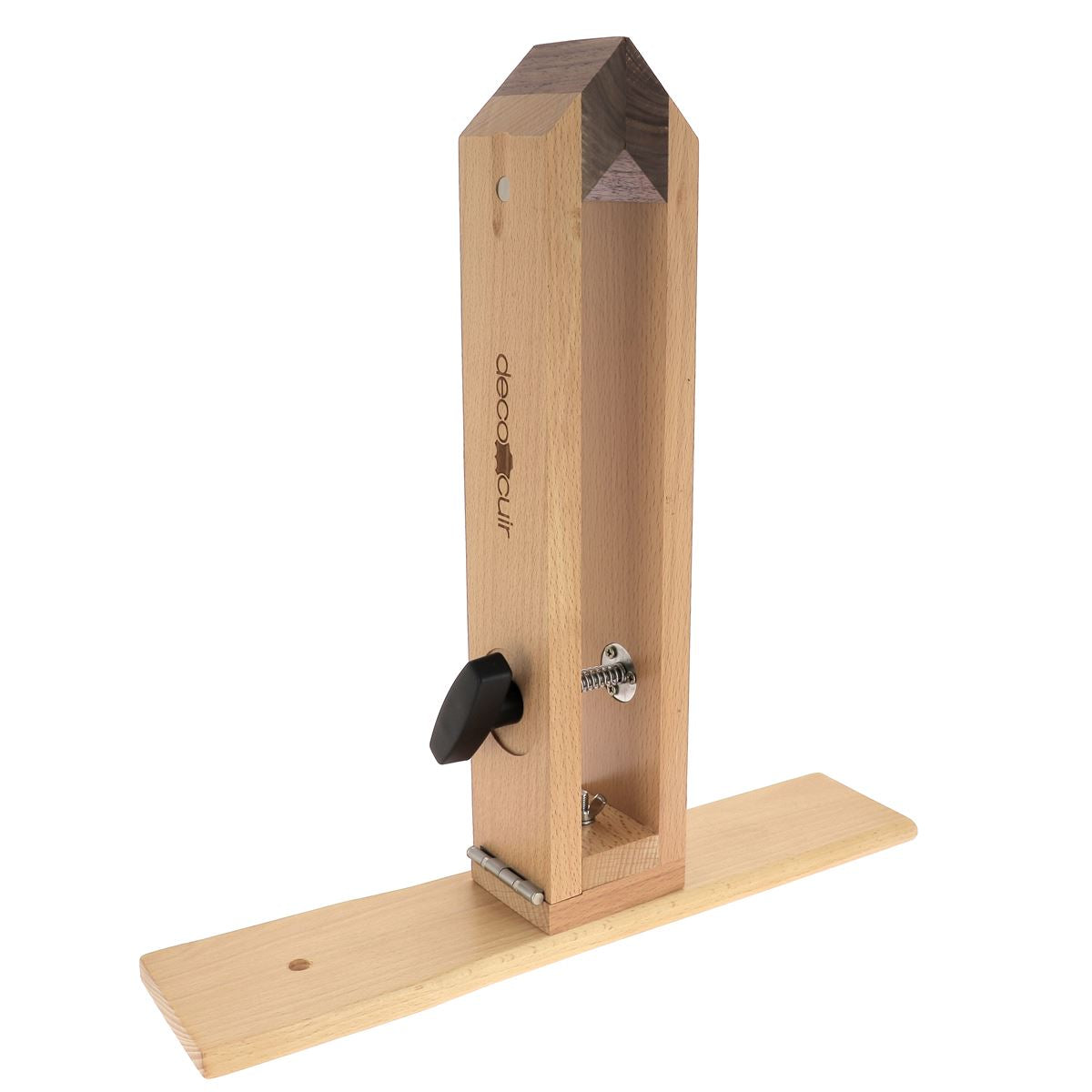

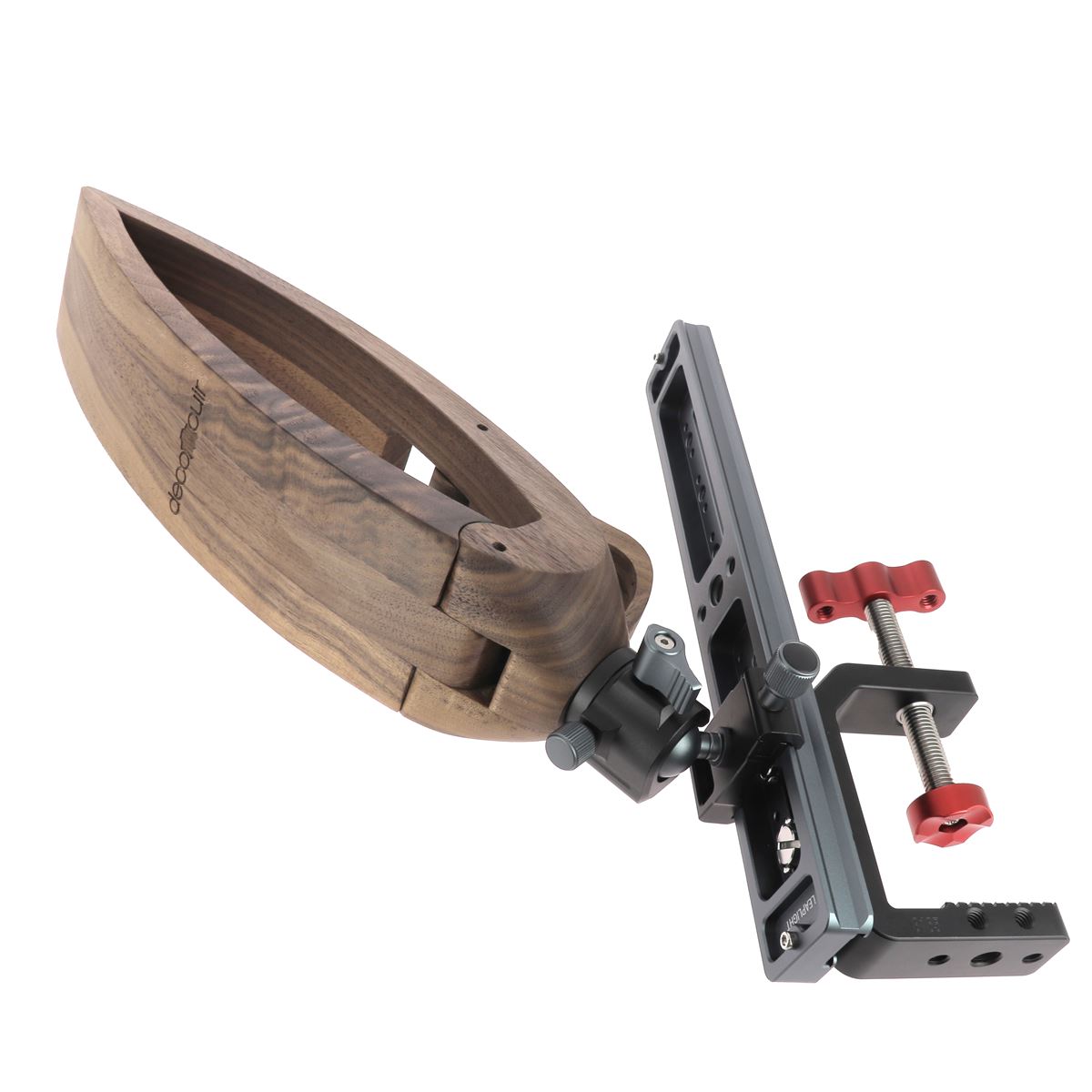

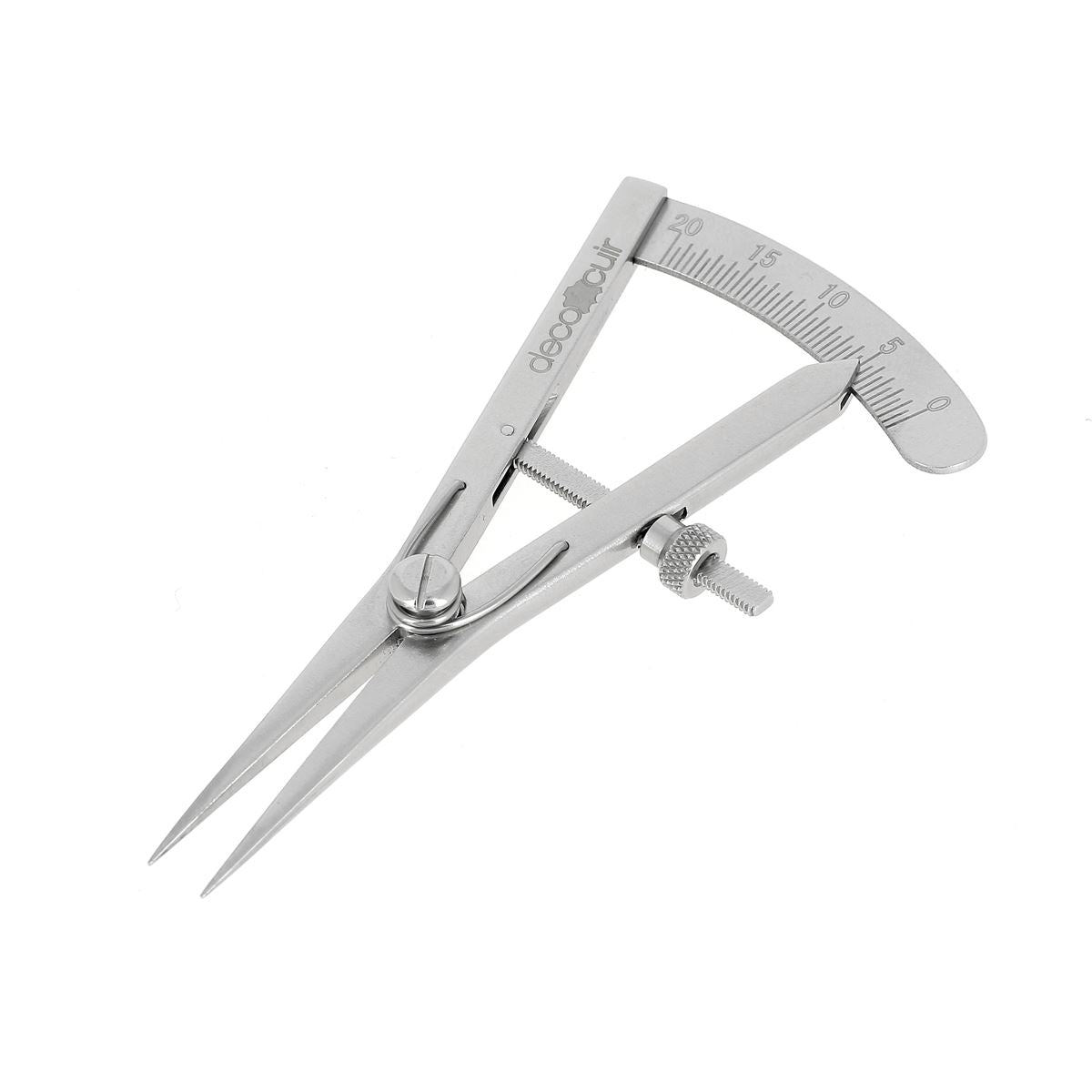
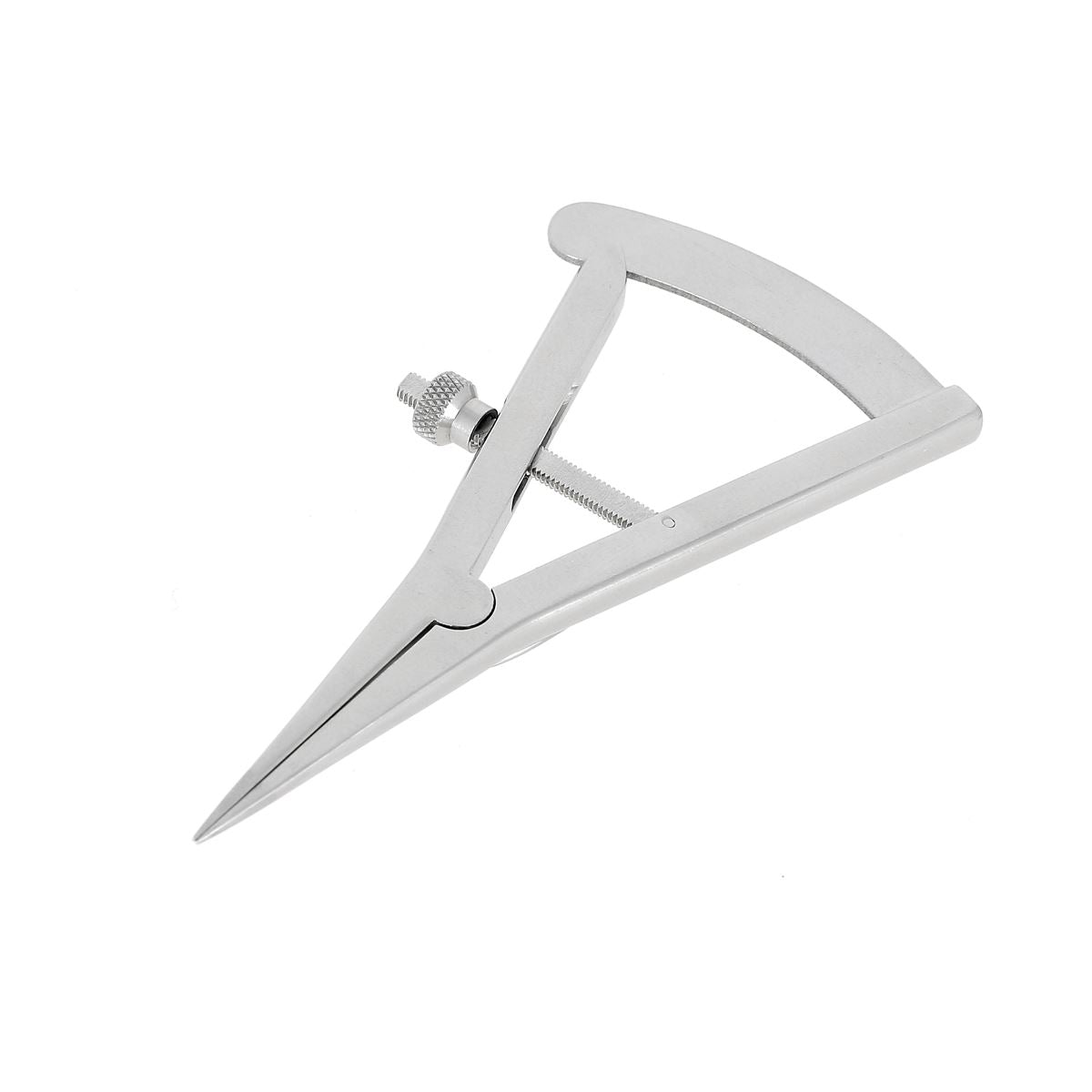
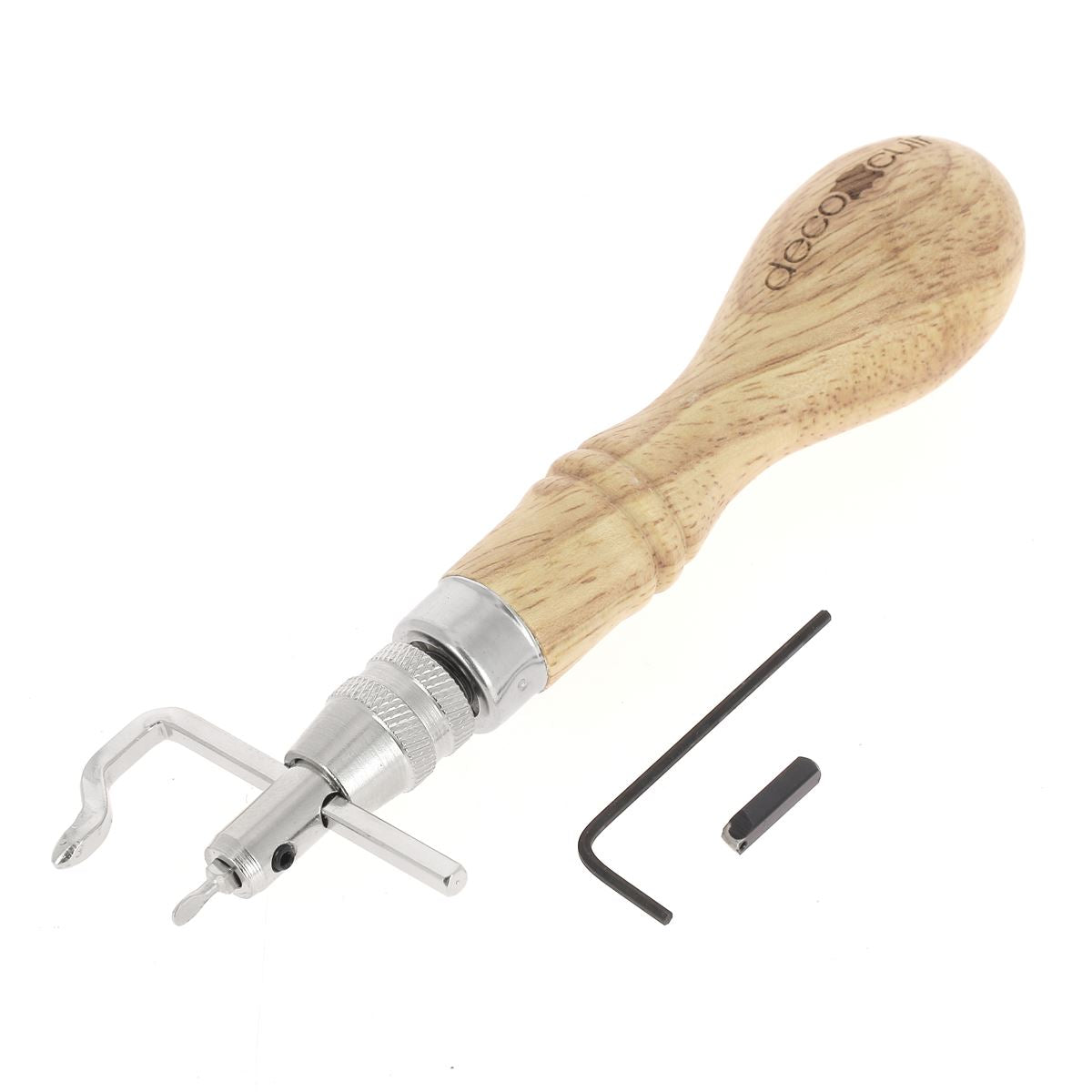
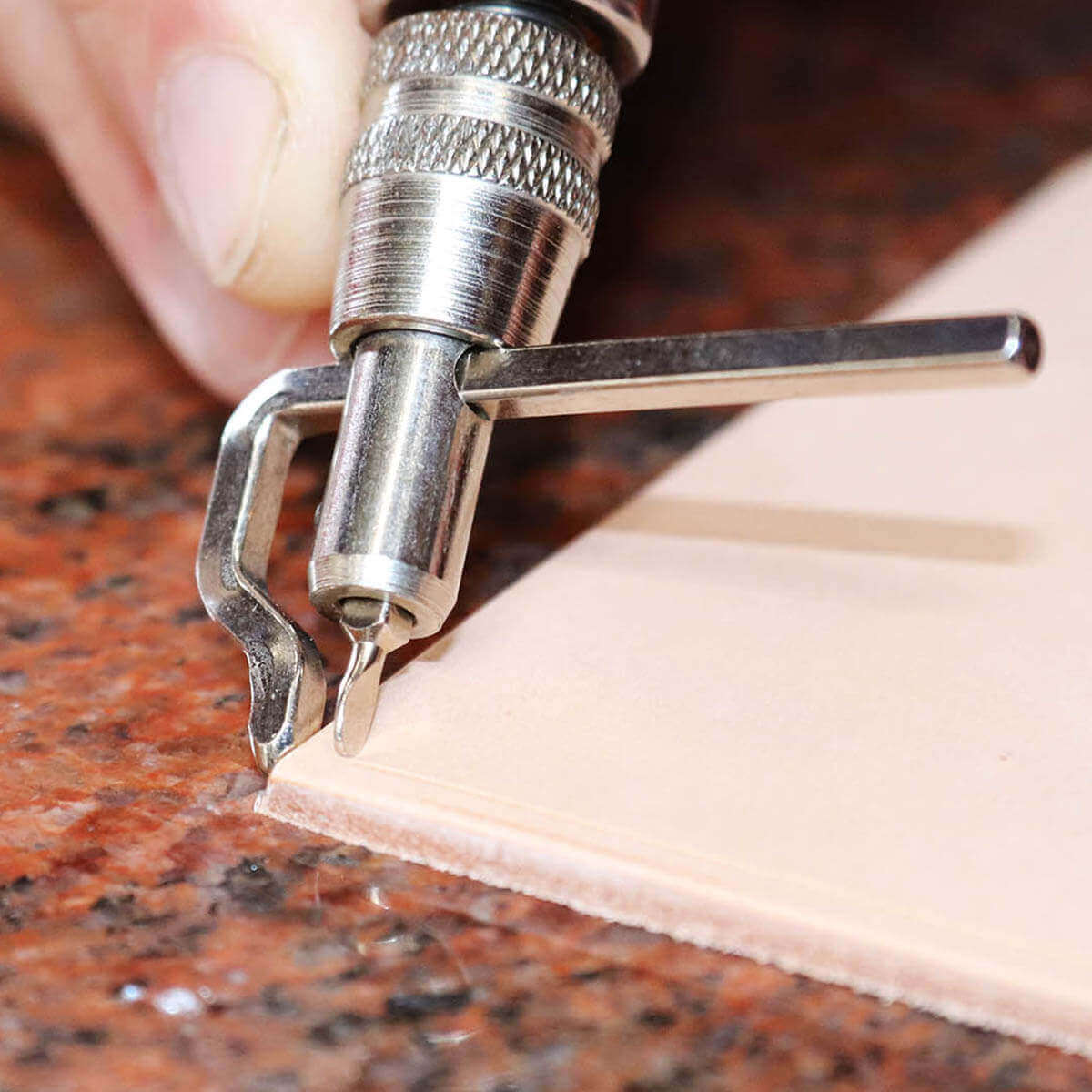


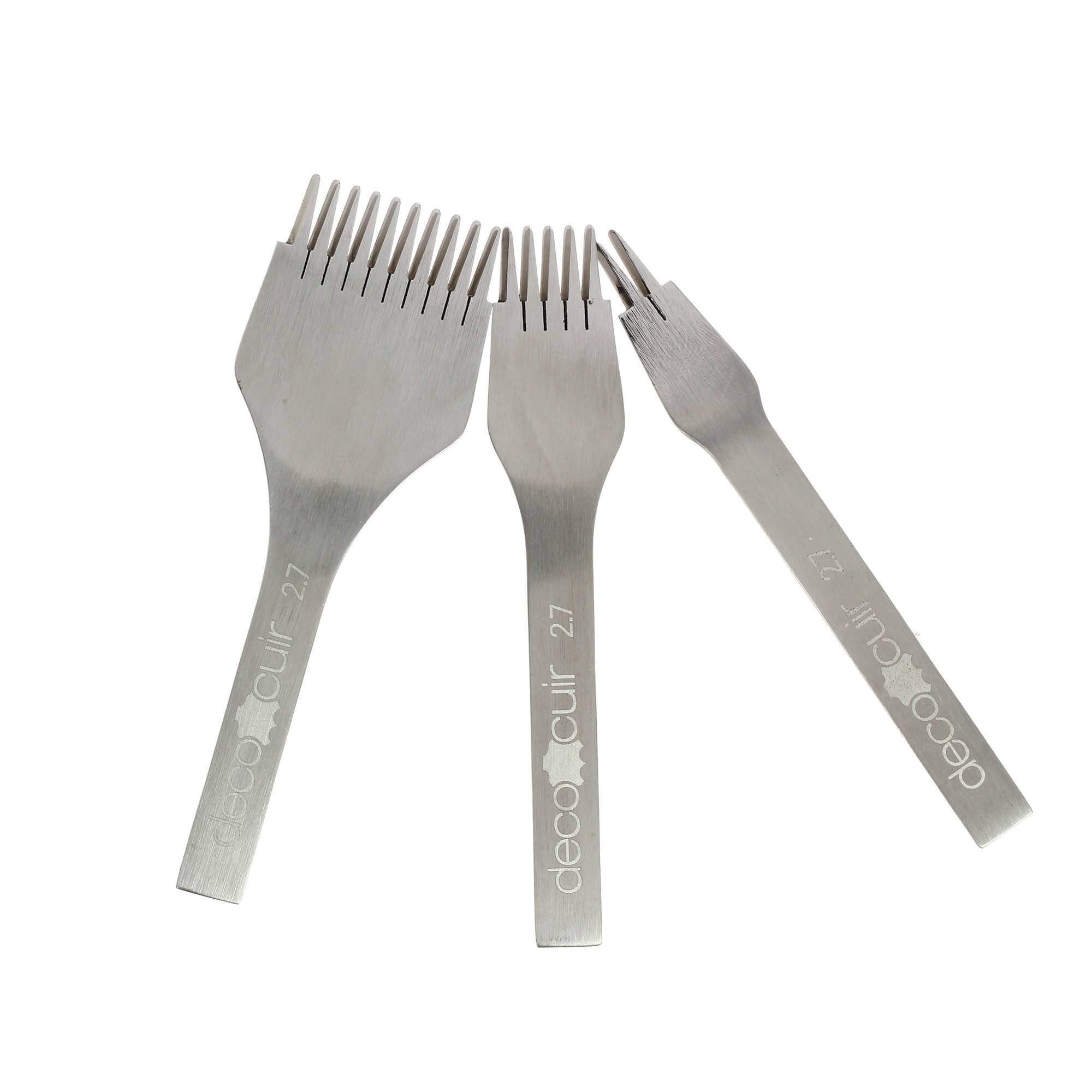
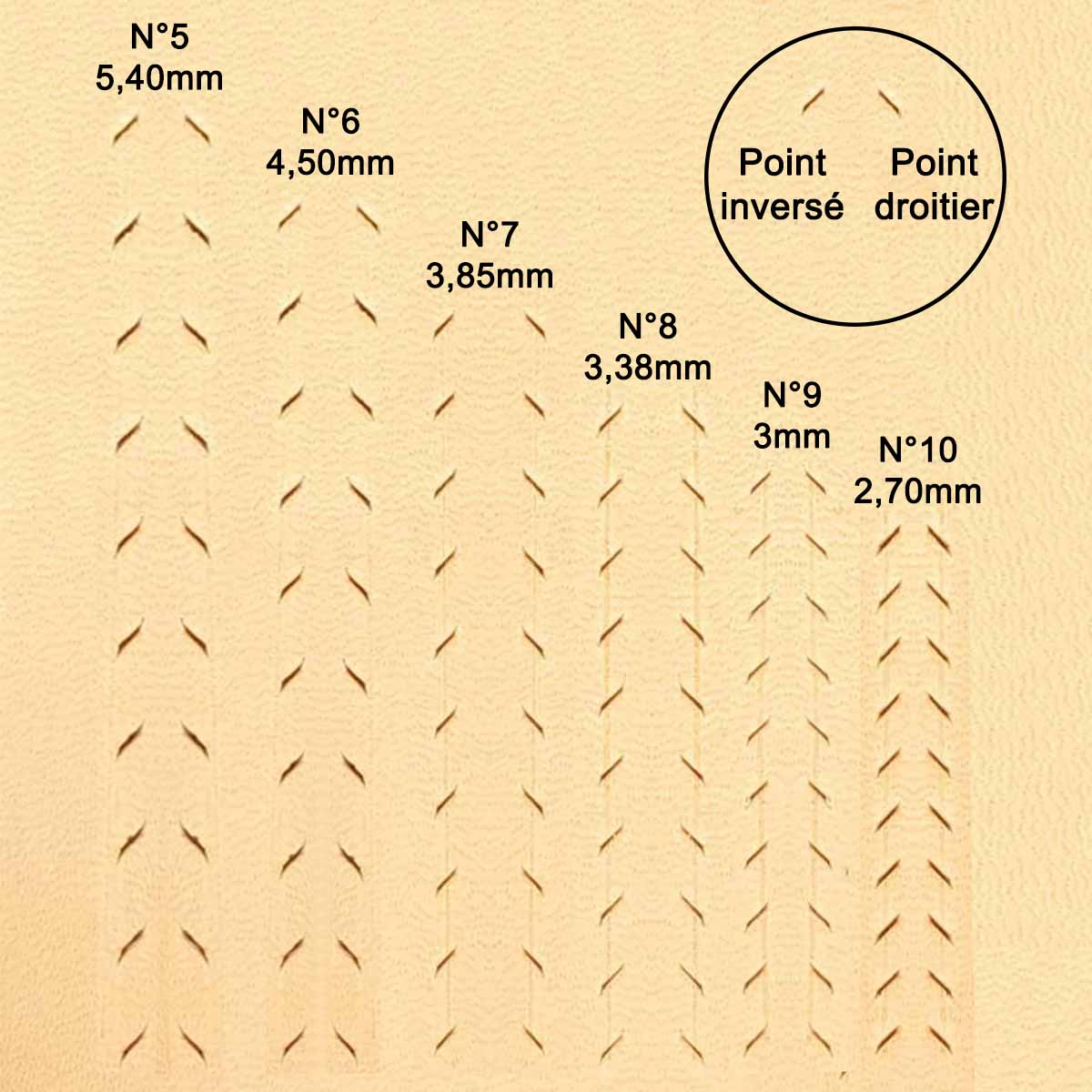


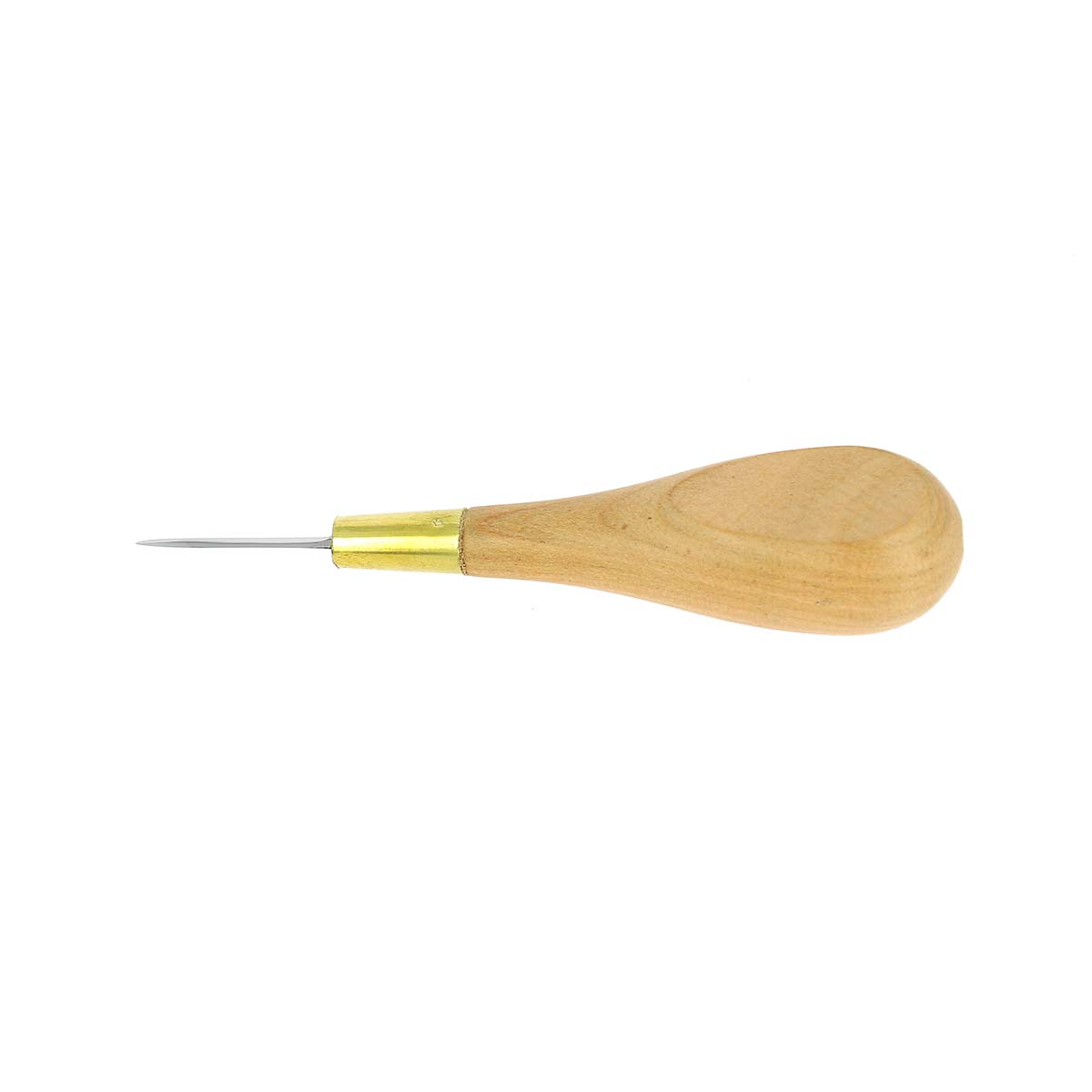



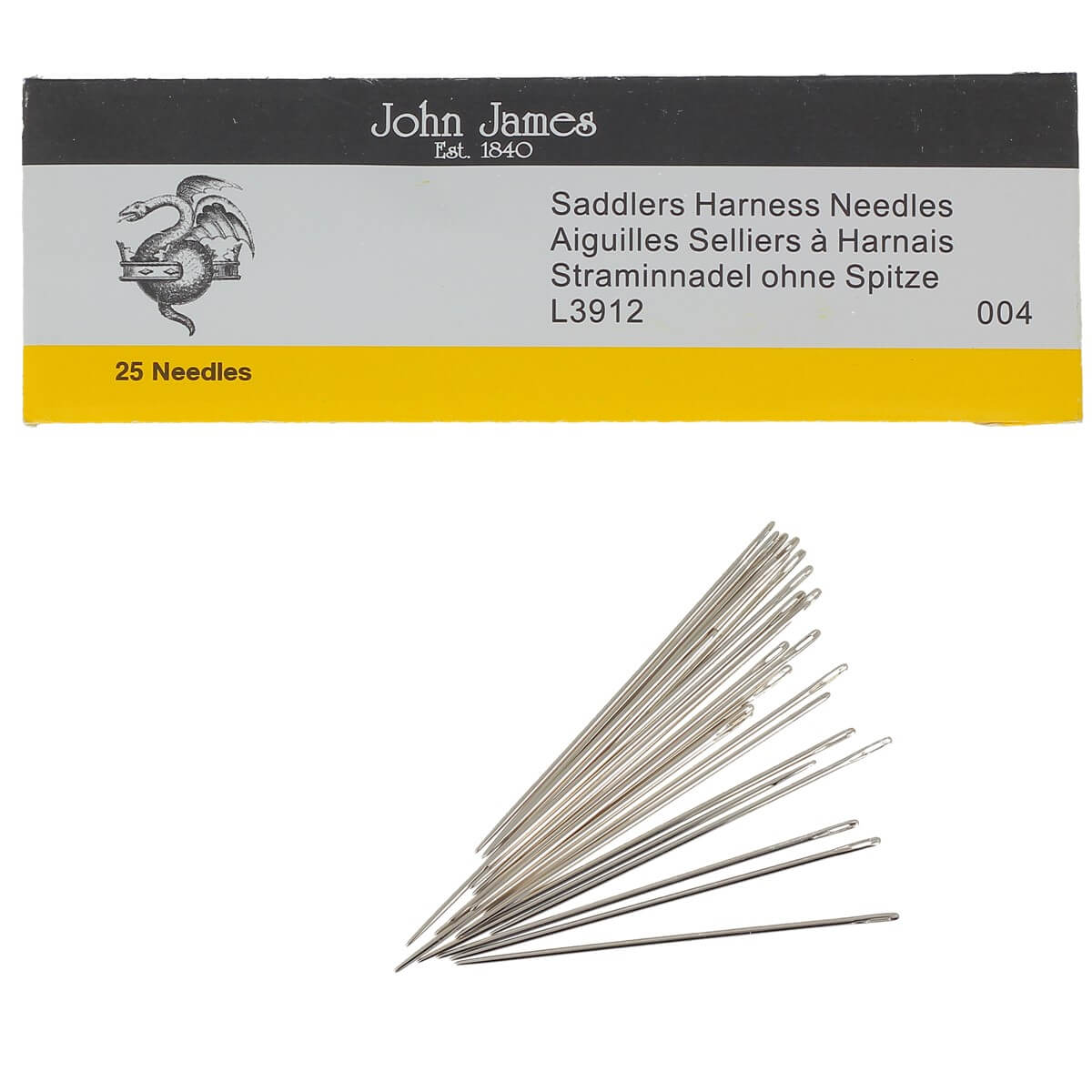
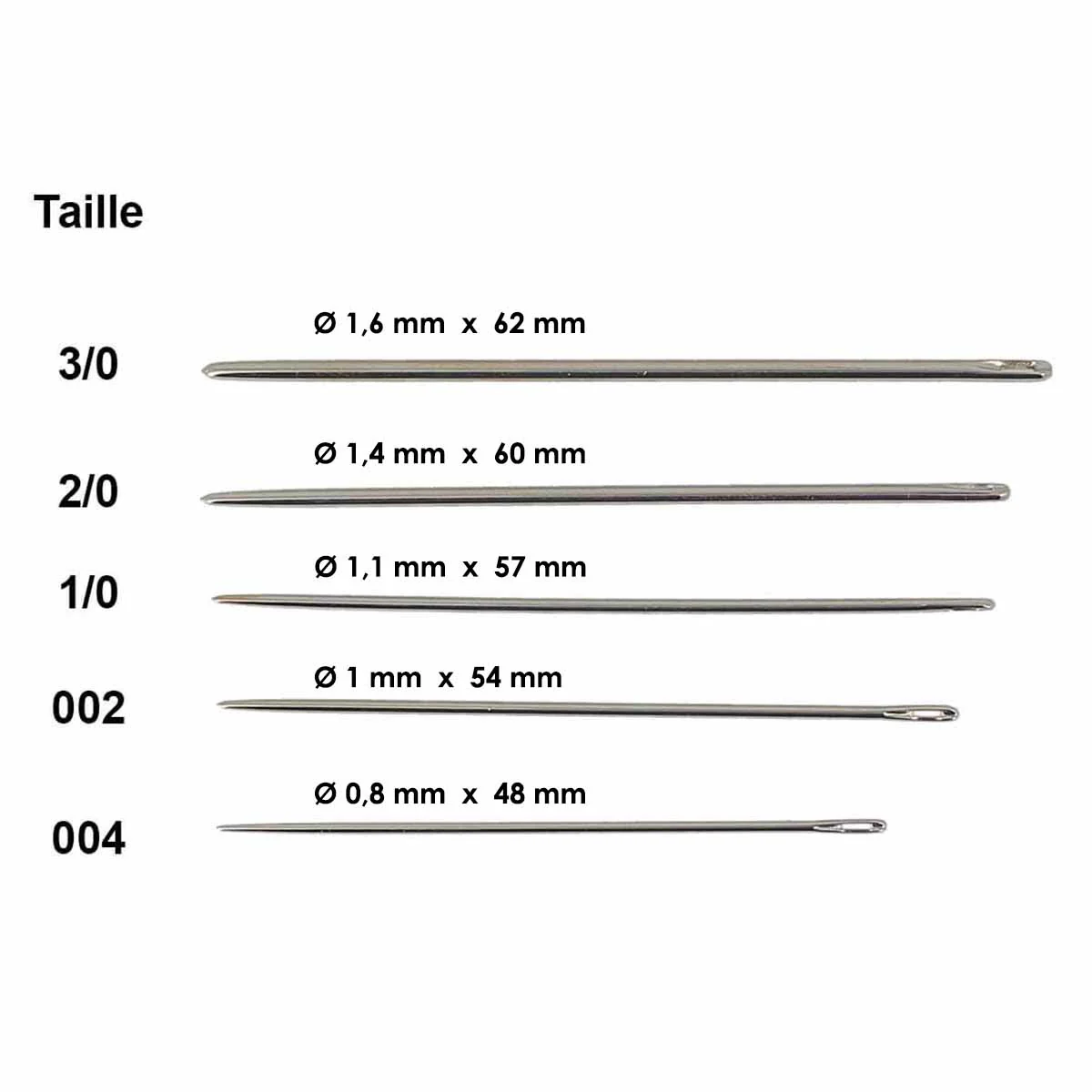
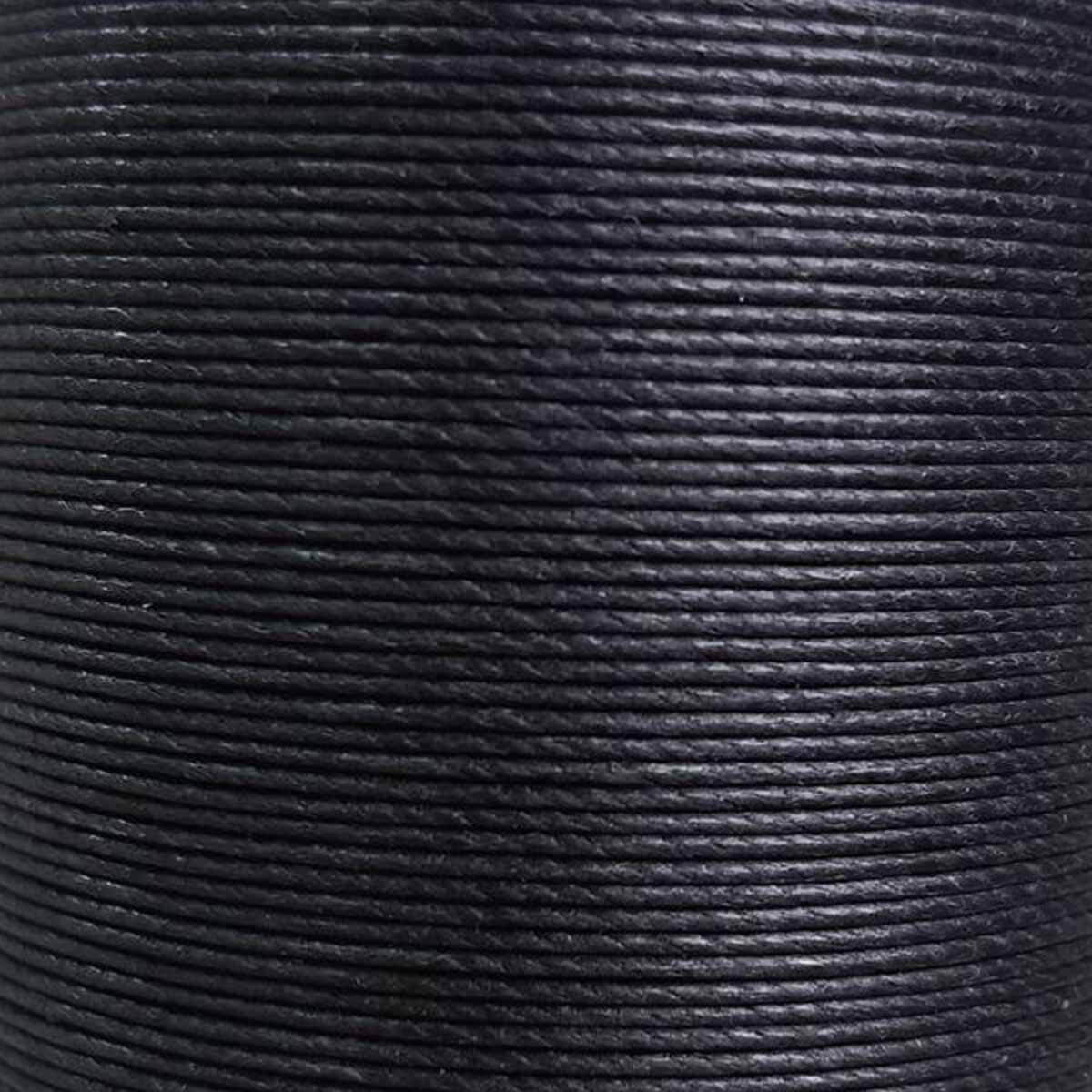






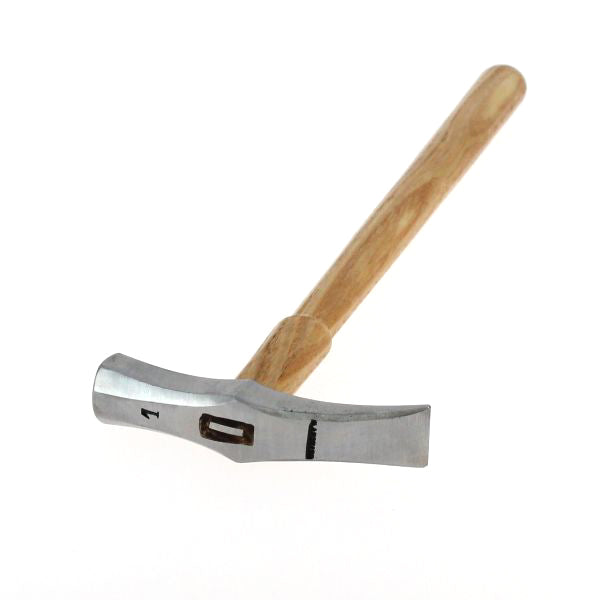

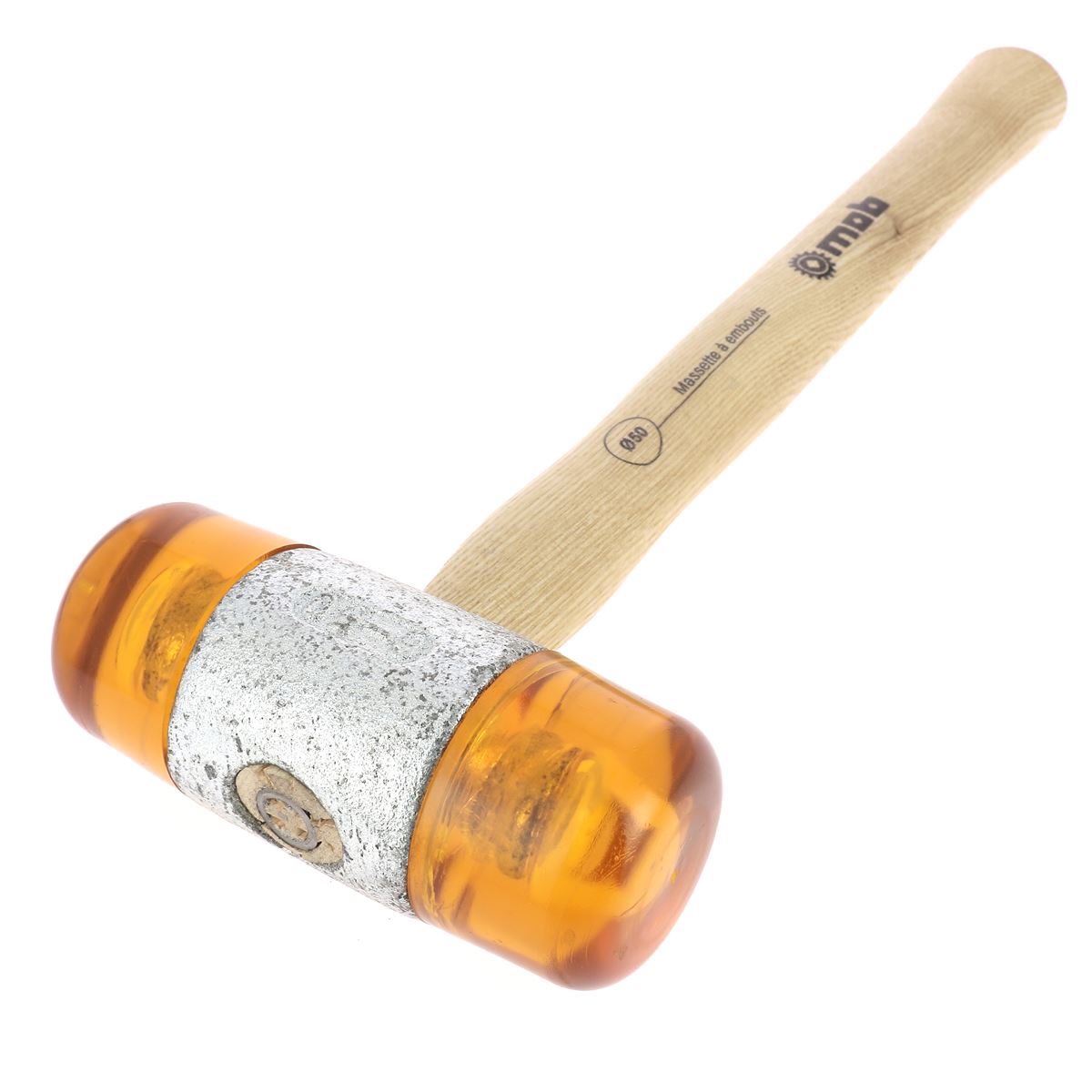

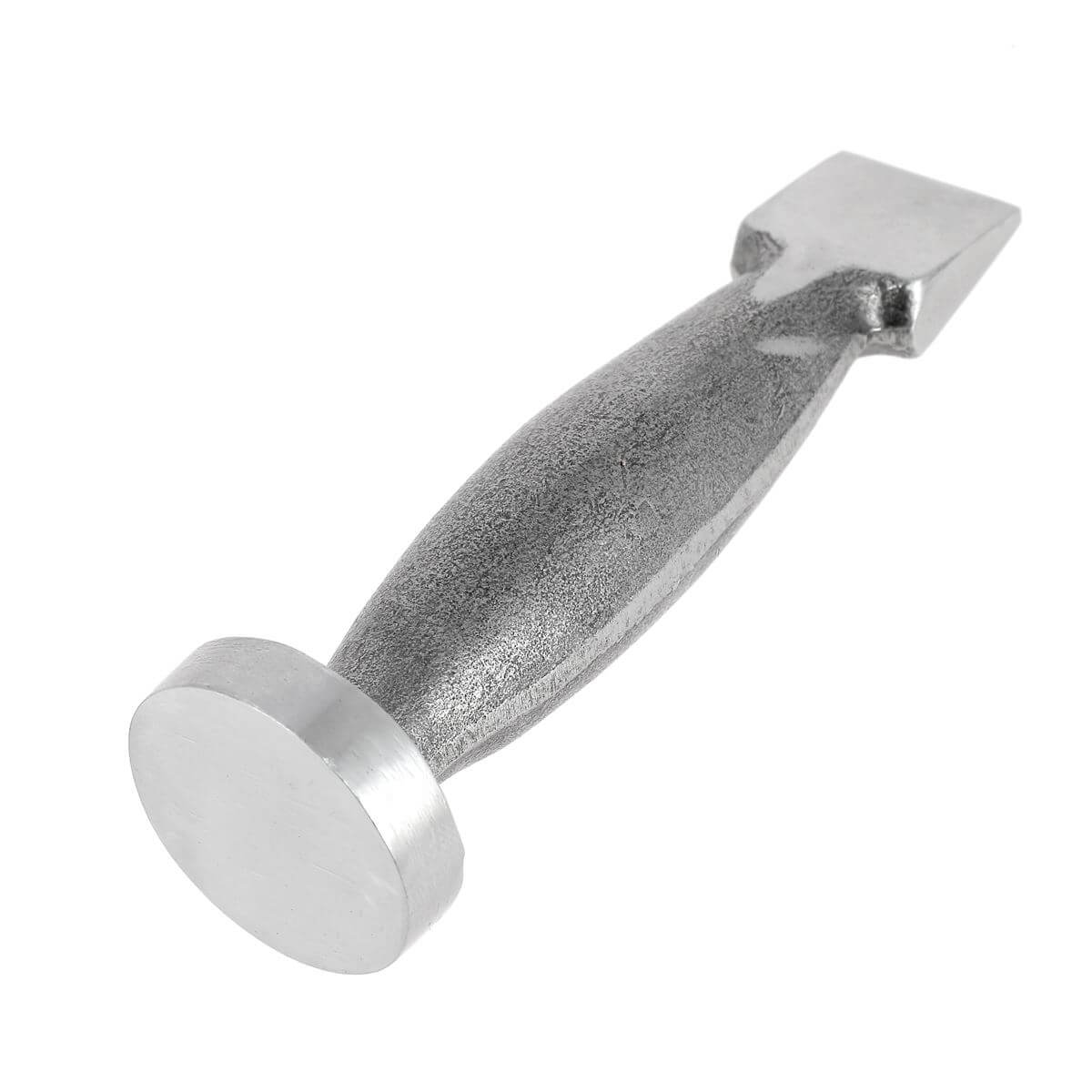

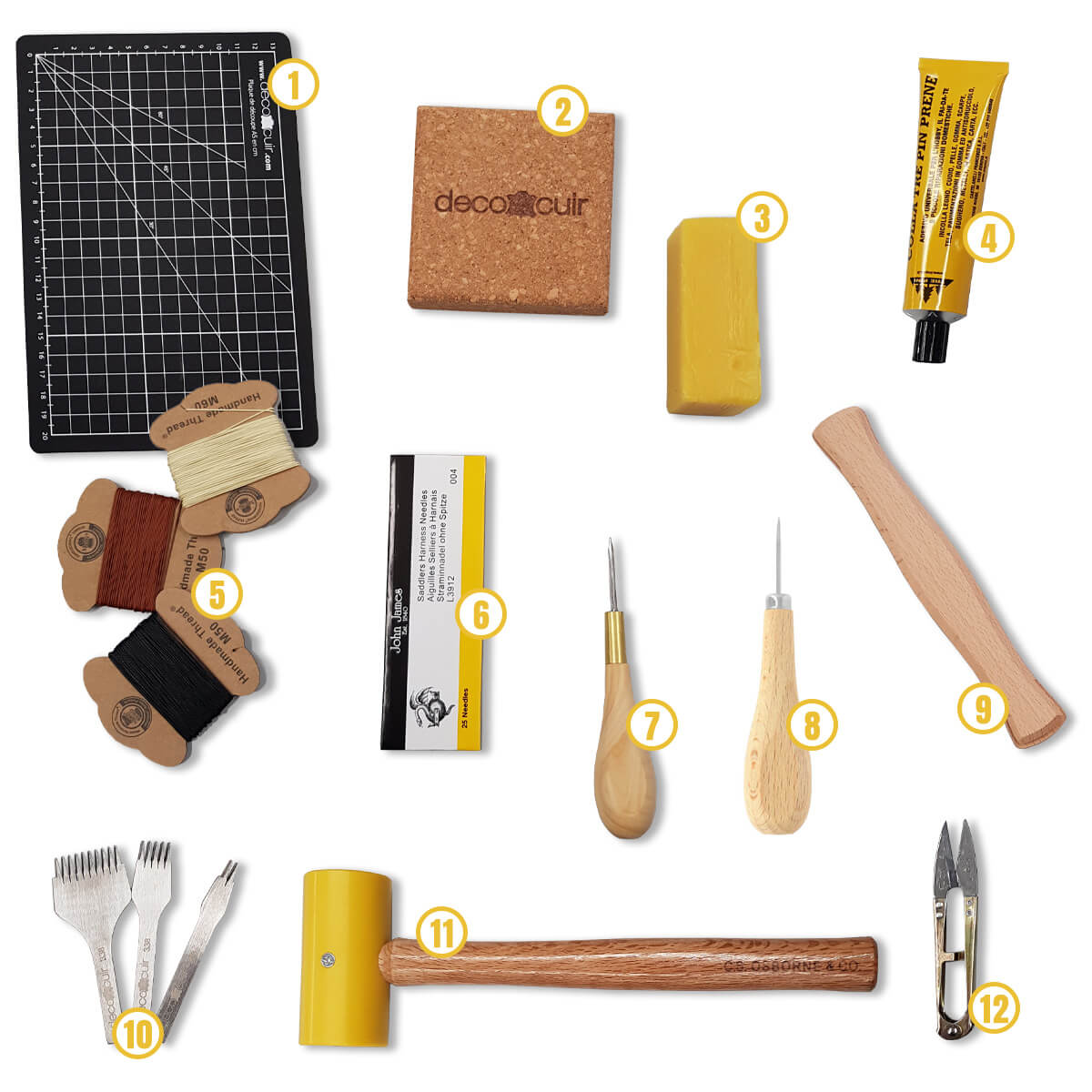
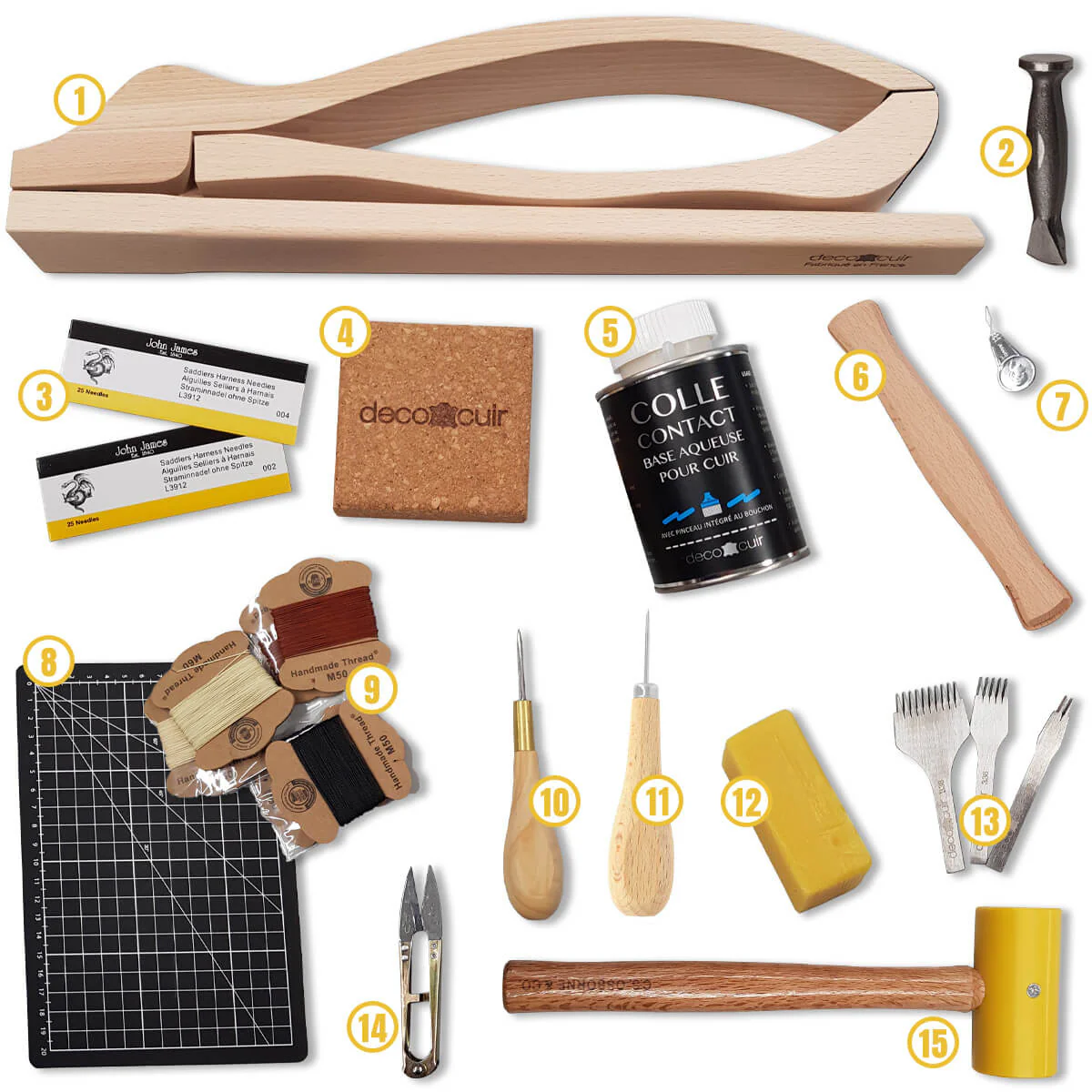



4 comments
Briatte André
Travaillez devant un petit ventilateur de table et vous verrez que vos mains resteront sèches
Pat jivago
Merci pour le partage tutos clairs Bravo
Anonymous
Bonjour Cécile,
Nous vous conseillons de mettre du talc sur vos mains et d’utiliser une paumelle en cuir. La paumelle va protéger vos mains et vous permettre de pousser plus facilement les aiguilles à travers le cuir, sans vous faire mal aux doigts.
https://www.decocuir.com/products/paumelle-en-cuir-pour-couture-main-droite-vergez-blanchard
https://www.decocuir.com/collections/fils-couture-mercerie-cuir-decouvit-ciseau
Bonne journée, L’équipe Deco Cuir
cecile
Bonjour, j’aimerais un petit conseil sur un problème pas glamour quand je fais de la couture point sellier. Lorsqu’il fait chaud j’ai les mains super moites et c’est super difficile de coudre comme ça, ça me lacère les doigts en plus de perdre un temps précieux. Est ce que certains d’entre vous auraient une solution, y aurai-t’il des gants fait pour la couture qui permettrait d’attraper l’aiguille facilement ?
Je vous remercie de vos réponses.